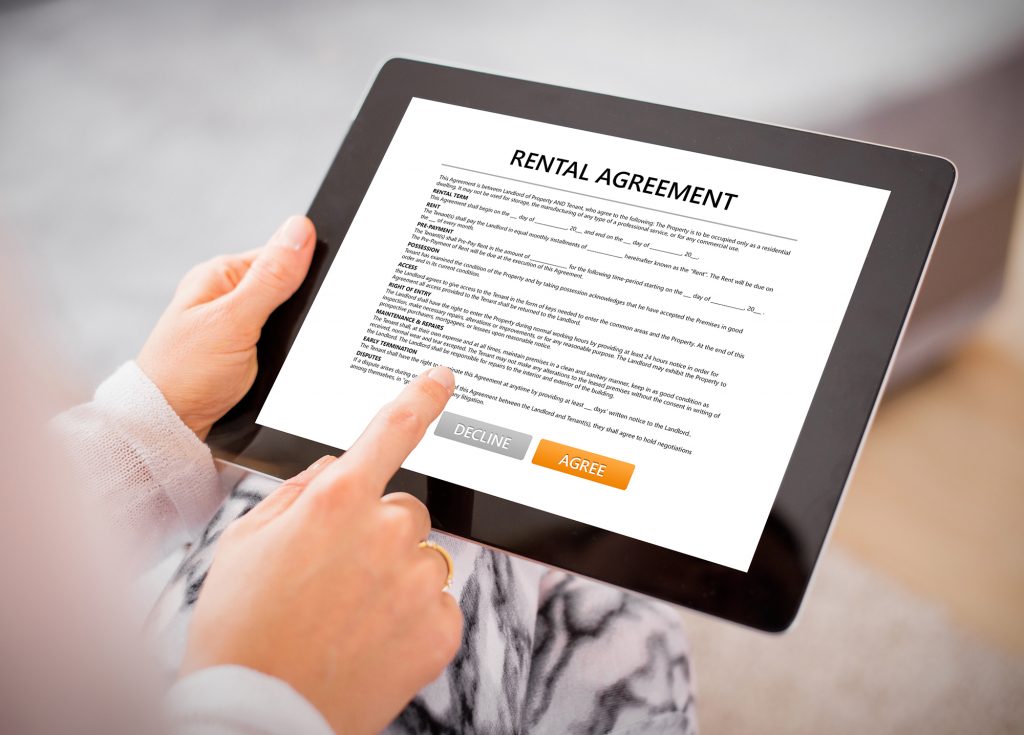

A rental agreement (or, more commonly, a lease) can protect both you and your tenants by setting expectations upfront and putting forth the property’s rules and requirements . A specific, detailed lease may mitigate disputes and misunderstandings as well as provide clarity when questions arise.
In select locations, you can create a customizable online lease with Zillow Rental Manager . Simply log in to your Zillow Rental Manager account, enter the address for the property then select Leases . If you already have properties in your account, select the Leases tab for the property you want to create a lease for. From there, you’ll be guided through the entire lease-creation process.
Note : This guide is for informational purposes only. Zillow, Inc. does not make any guarantees about the sufficiency of the information in or linked to from this guide, or that it’s compliant with current, applicable or local laws. Landlord-tenant laws change rapidly and may be regulated at the federal, state and local levels. This resource is not a substitute for the advice or service of an attorney; you should not rely on this resource for any purpose without consulting with a licensed attorney in your jurisdiction.
Typically, a rental lease agreement is created once you’ve completed these parts of the leasing process:
Every state has landlord-tenant laws which can regulate rent-related issues, lease renewals, addenda and notices to help you manage your rental property . These laws spell out your rights and obligations as a landlord as well as the rights and obligations of the tenant. Every state’s landlord-tenant laws vary in their requirements, so be sure to consult a local attorney to better understand how your landlord-tenant laws may impact your lease.
Here is a look at some state-by-state regulations from our landlord-tenant laws guide :
Depending on your situation, you may choose to create one of these lease types :
Fixed-term lease. This lease has a set end date, which is commonly between six months and one year.
Month-to-month lease. This lease will automatically renew each month until either the landlord or tenant chooses to terminate the agreement.
You can easily select your lease type and set start and end dates when you create a lease using Zillow Rental Manager .
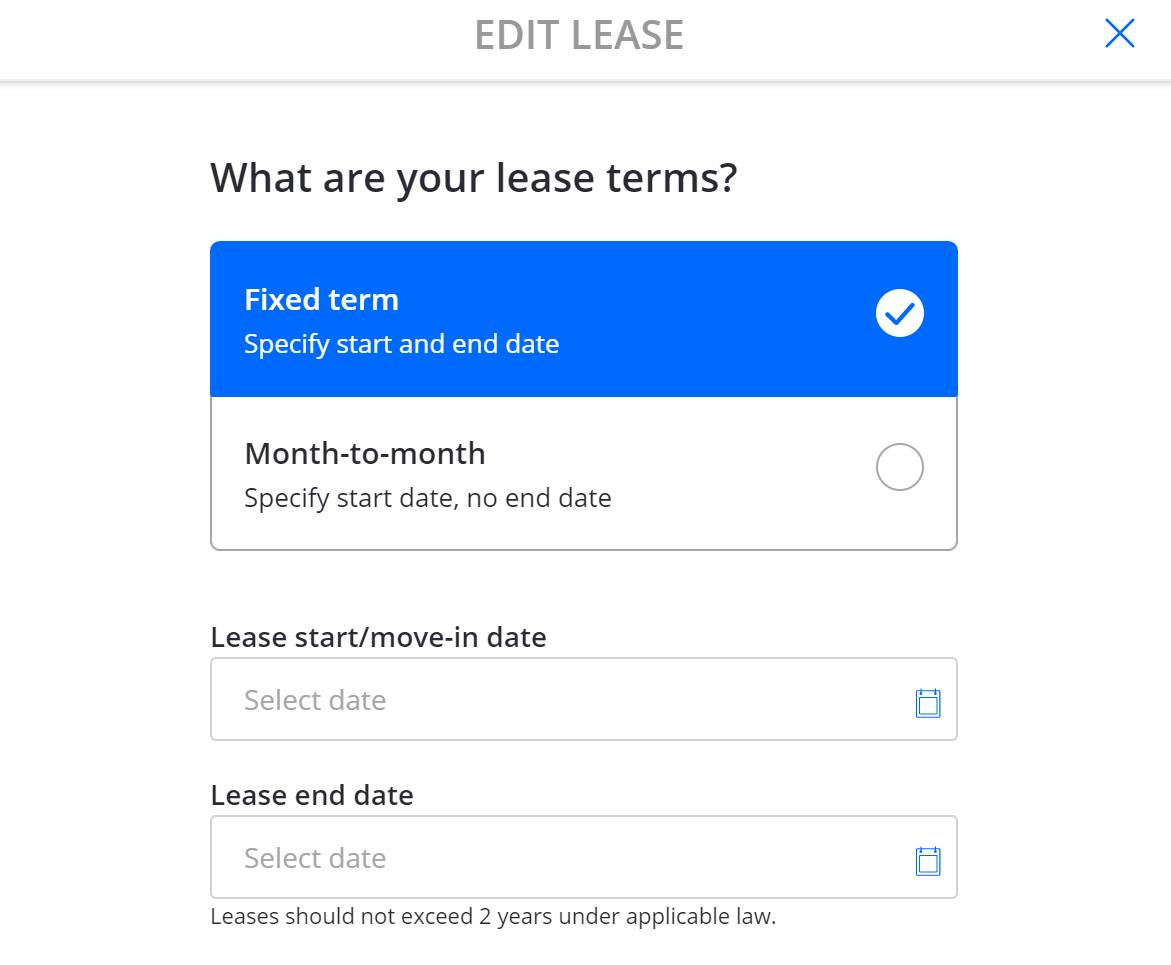
Some items that might be attached to your rental lease include:
If you decide to collect a security deposit , include the required amount when you make a lease.
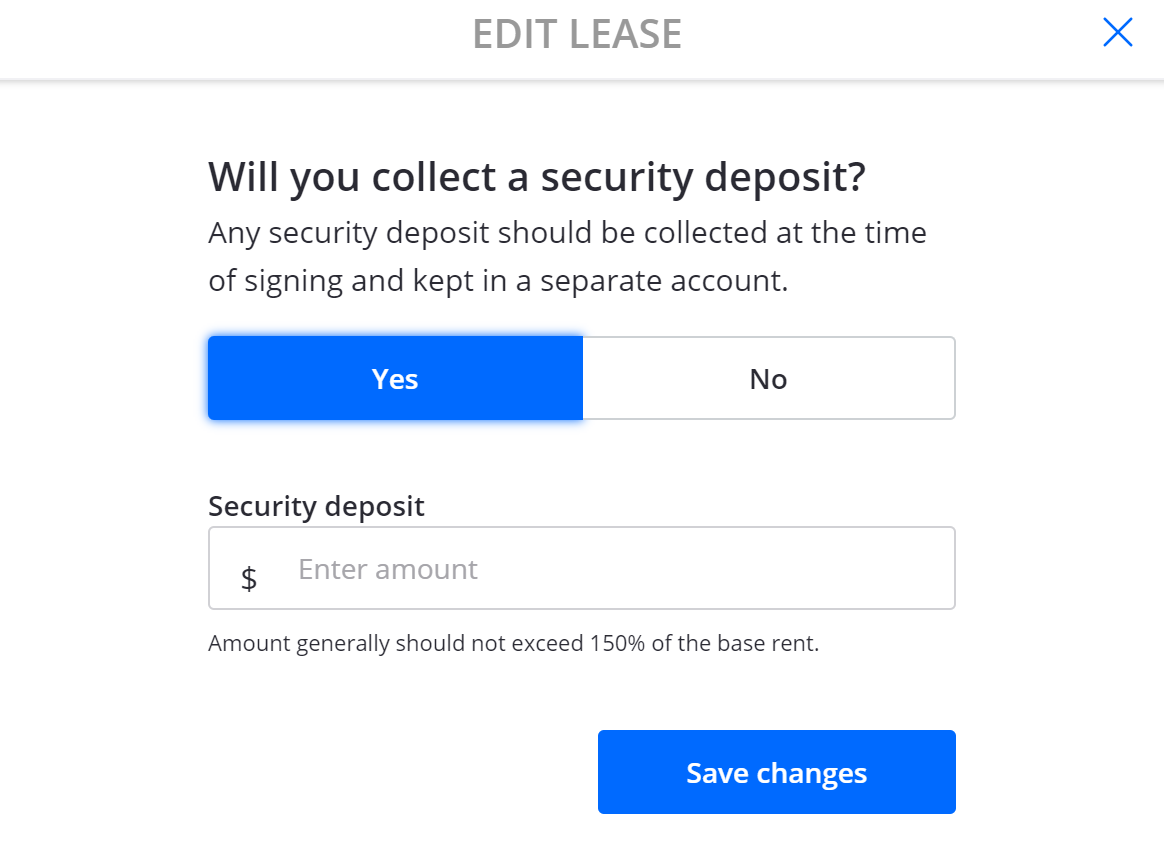
Laws around how much you can collect and how you should store security deposits vary by state. Unused security deposit funds must be returned to the tenant within a certain period of time, which varies by location.
When you collect a security deposit, you may also choose to collect the last month’s rent. Some states, like Oregon, may treat the last month’s rent like a security deposit, meaning you must hold it in a separate account and give the tenant any accrued interest.
Follow these 13 steps to create a lease online using Zillow Rental Manager.
The first step to creating a lease agreement is to fill out your name, phone number, email address and physical address for receiving important notices in your lease.
This information will also be gathered for:
Any additional occupants who are not paying rent, such as children or elderly relatives, should also be documented to ensure you have a record of who is living in the rental property. Some states may also have maximum occupancy standards that need to be met.
The next step when creating the residential lease agreement is to detail the information about your property. There are two main types of rental properties:
Single-family homes are your standard house or townhome.
Multifamily homes are apartments, condos, duplexes and multiplexes, basement apartments, and mother-in-law suites.
No matter which type of rental property you own, you’ll want to gather:
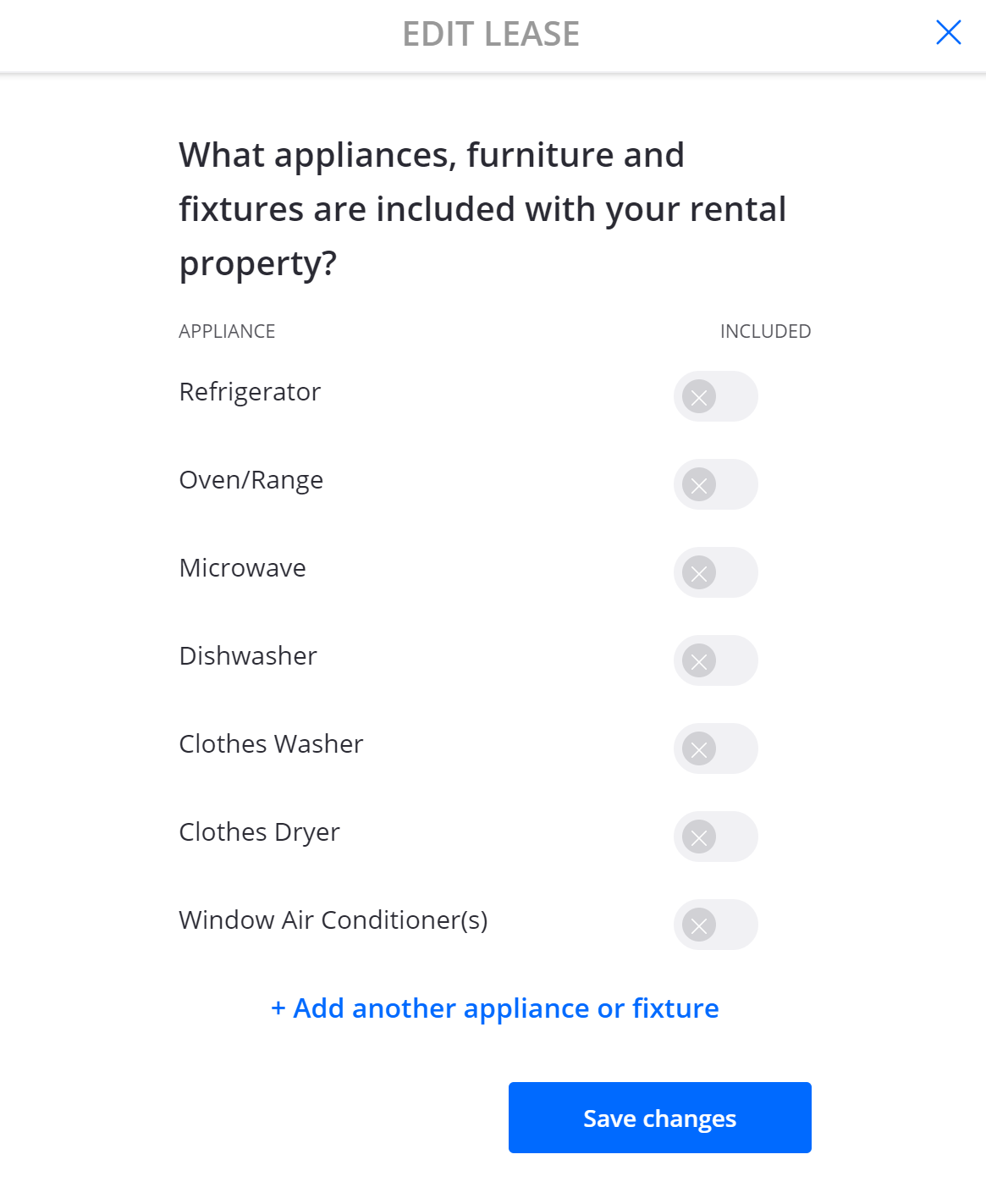
Your lease agreement will need to outline any utilities and services provided by you and any that the property offers. These typically include:
You may decide to cover the cost of these items yourself or indicate in the rental agreement that they will be paid by the tenant. If your tenant is responsible for paying some or all utilities, you’ll need to specify which ones and when payment is due.
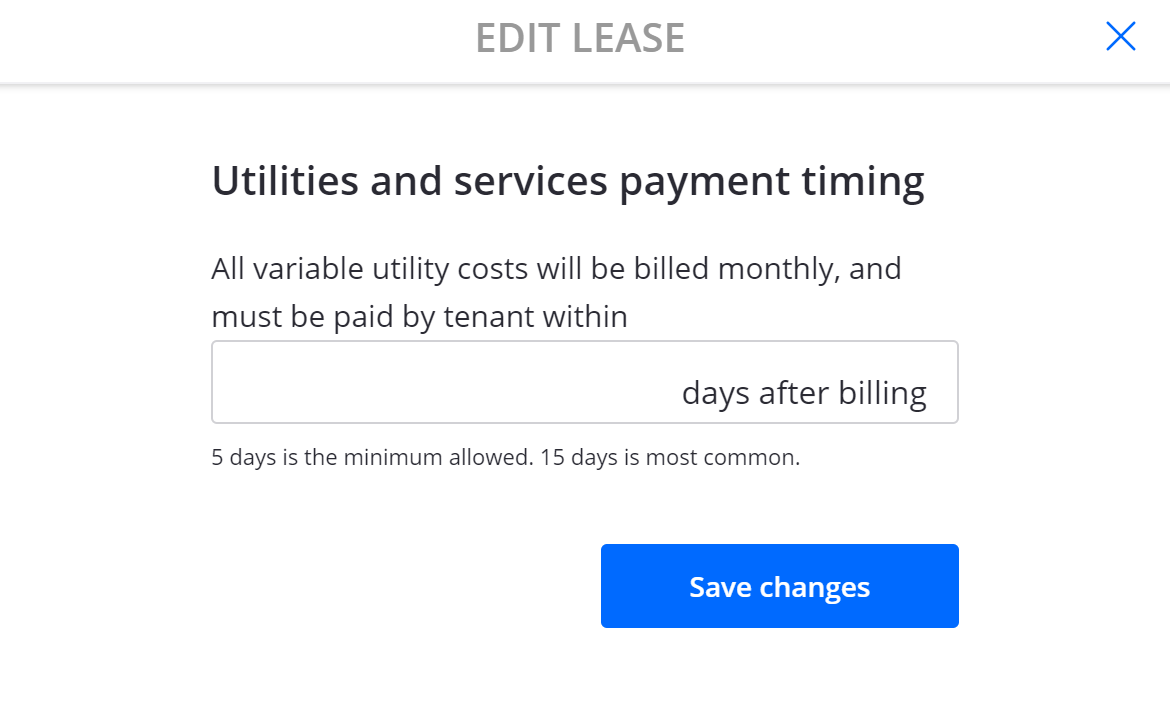
Lease terms outline the type and length of the lease, the ramifications if the tenant breaks the lease, and the circumstances under which your tenant may leave early .
Termination. Make sure your rental lease agreement clearly spells out the conditions of termination. Does it have a set end date, or is there an option to continue month to month? As the end date approaches, you’ll want to ask your tenant if they would like to renew the lease .
Eviction. You should include clear policies about what actions violate the lease agreement, and be sure to follow eviction laws in your area should you ever need to evict a tenant .
Base rent is the monthly rent before any other charges are applied. You’ll want to set a rent rate that is comparable to rentals in your area and make sure you’re complying with state-specific rent-control laws. The Zillow Rental Manager lease tool allows you to set:
If a tenant moves in partway through a month, you may decide to prorate the rent. Our lease tool can calculate the prorated rent amount based on the tenant’s move-in date and the rent-due date.
In addition to monthly rent, tenants may be responsible for paying other monthly charges. Be sure to describe all payment requirements when you create a lease, including:
You can choose the methods a tenant can pay you with — just be sure to state them in the lease agreement. Common methods include electronic payment, check and money order. With Zillow Rental Manager , you can easily collect monthly and one-time payments online.
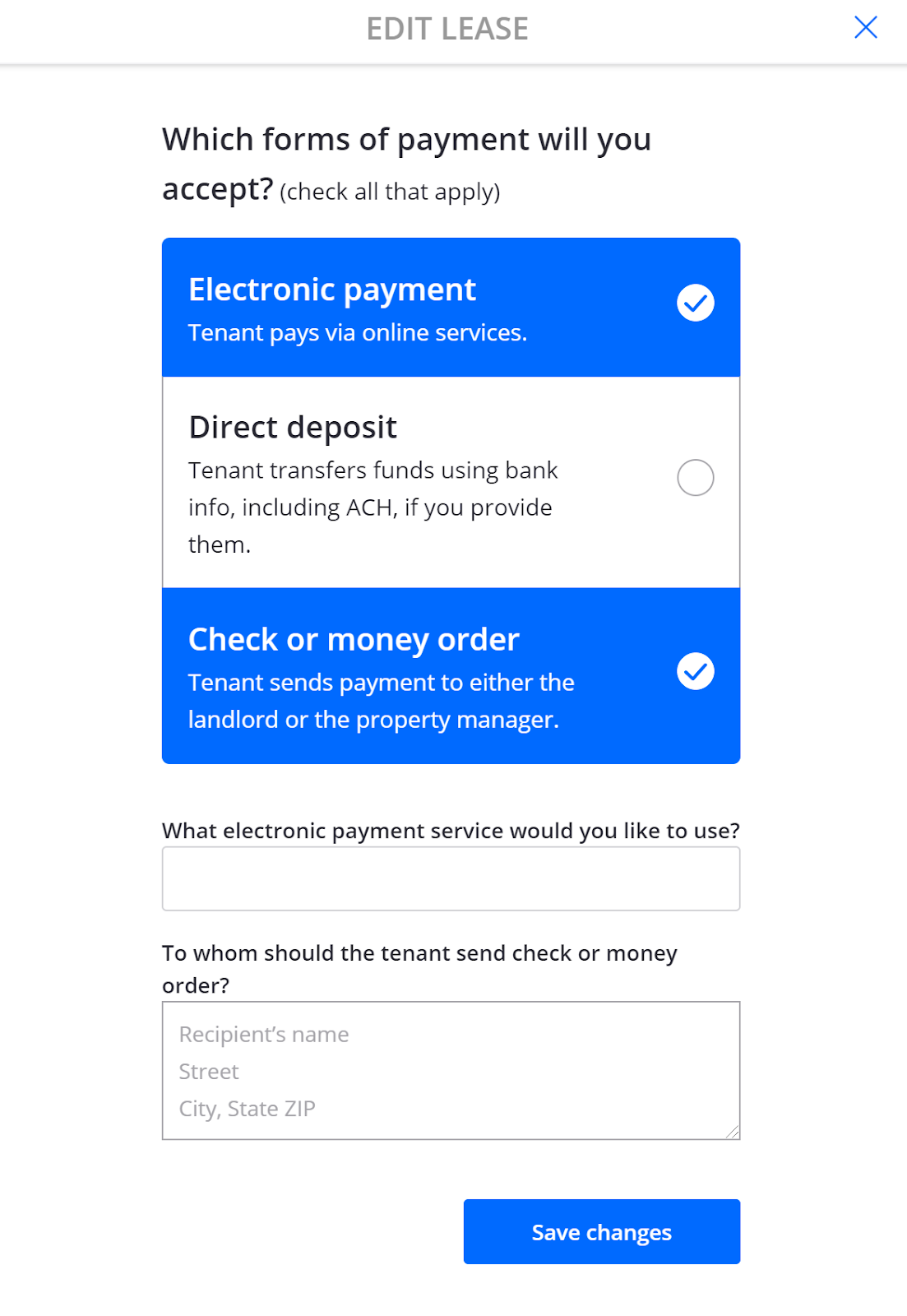
Both the tenant and the landlord have certain responsibilities . You can outline the rights and obligations of both parties when you make a lease using our tool.
Tenant obligations. Tenants must comply with the tenant obligations listed in the rental agreement. Some of these may include:
Landlord obligations. Likewise, there are responsibilities you must uphold. Some landlord obligations may be:
A landlord can also specify whether tenants are required to purchase renter’s insurance before moving in. If so, some states may require you to maintain comparable liability insurance. You should speak with an insurance broker to determine an appropriate amount of coverage and include the minimum coverage amount in your lease agreement.
As a landlord, you can set rules to ensure spaces are livable and tenants get the most enjoyment out of their rental. The rules you set when you create a lease might include:
Homeowners or condo association rules: These are rules that may be applied to your specific neighborhood or association.
Written consent rules: You can specify whether modifications to the rental, like adding or changing locks, are allowed with written consent from the landlord.
Safety rules: These may include weight restrictions on balconies or porches, prohibiting flammable materials, and other related rules.
Maintenance rules: Who’s responsible for taking out trash, mowing the lawn or shoveling sidewalks? Spell out all of those details here.
Key rules: Make it clear what happens if a key is lost or what actions are required before a tenant moves out.
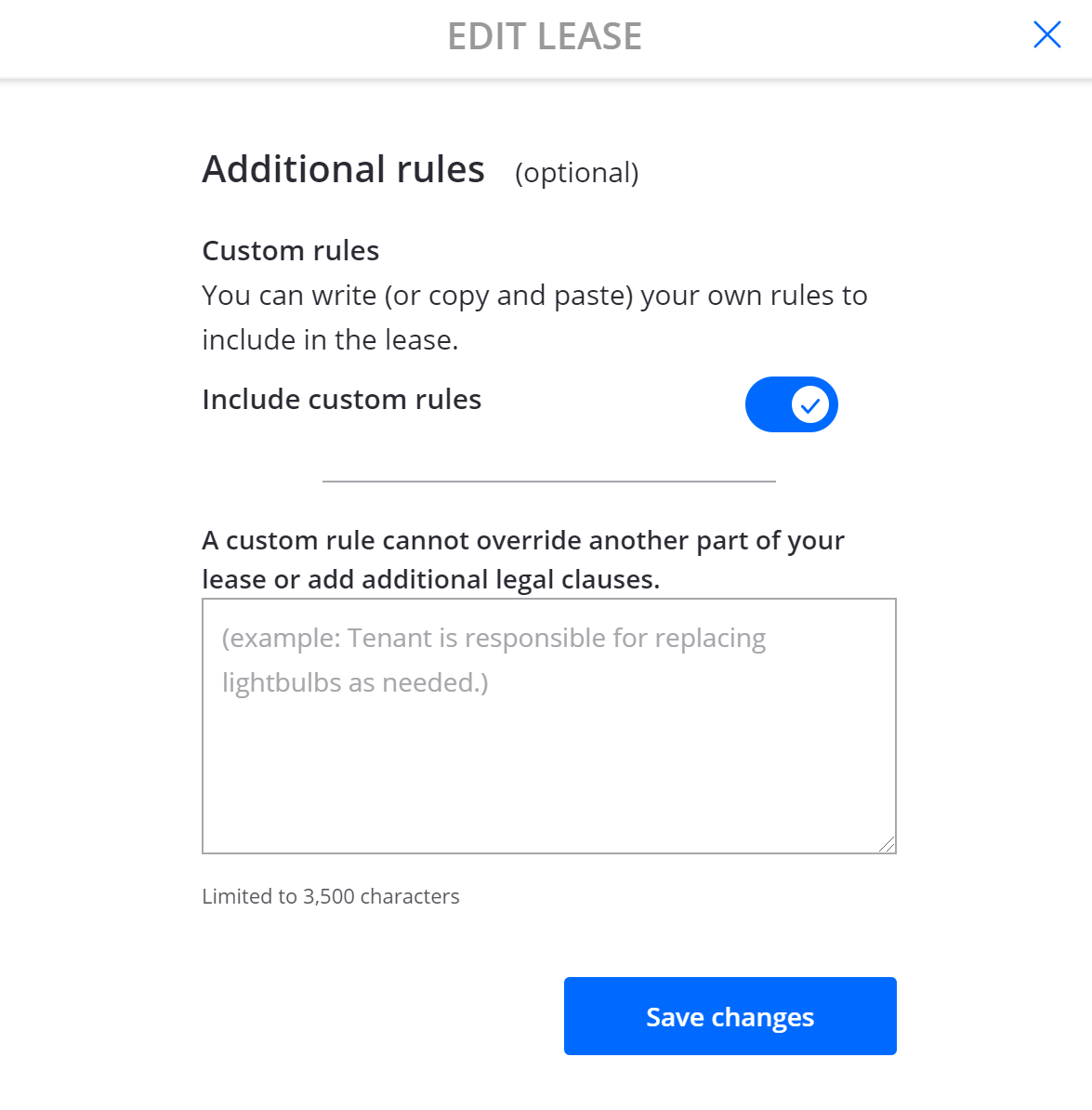
Consider adding policies to your lease that clearly set expectations. Our lease agreement template allows you to set policies around things like pets, storage and smoking.
Smoking
Is smoking allowed? If so, where are tenants and guests allowed to smoke?
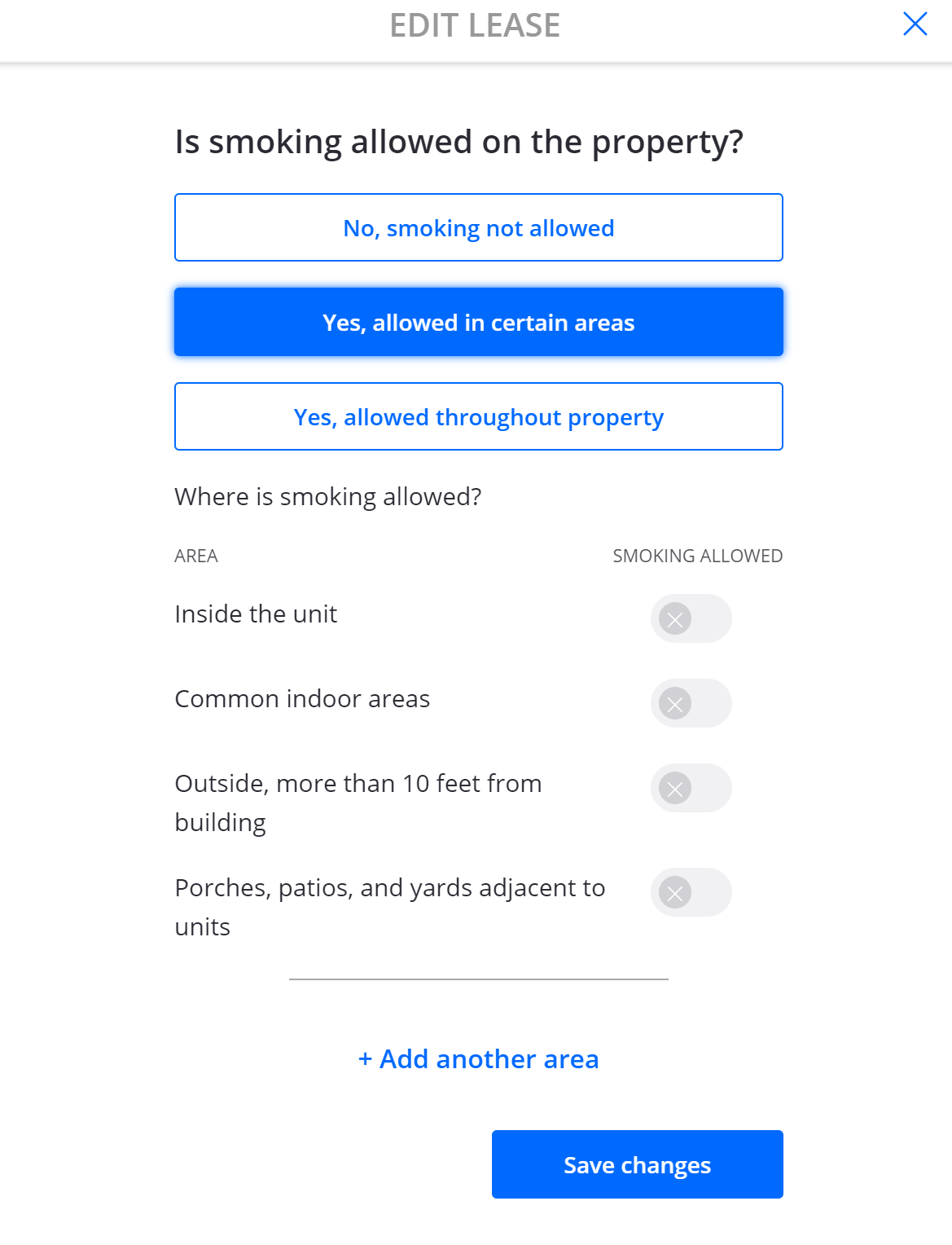
Pets
You can specify if pets are allowed and can even customize this section to include information about the pets that are approved to live on the property. Things like pet rent and additional insurance should also be covered.
Keep in mind that assistance animals are not considered pets, so you cannot charge a pet fee, pet rent or pet deposit if a tenant has one.
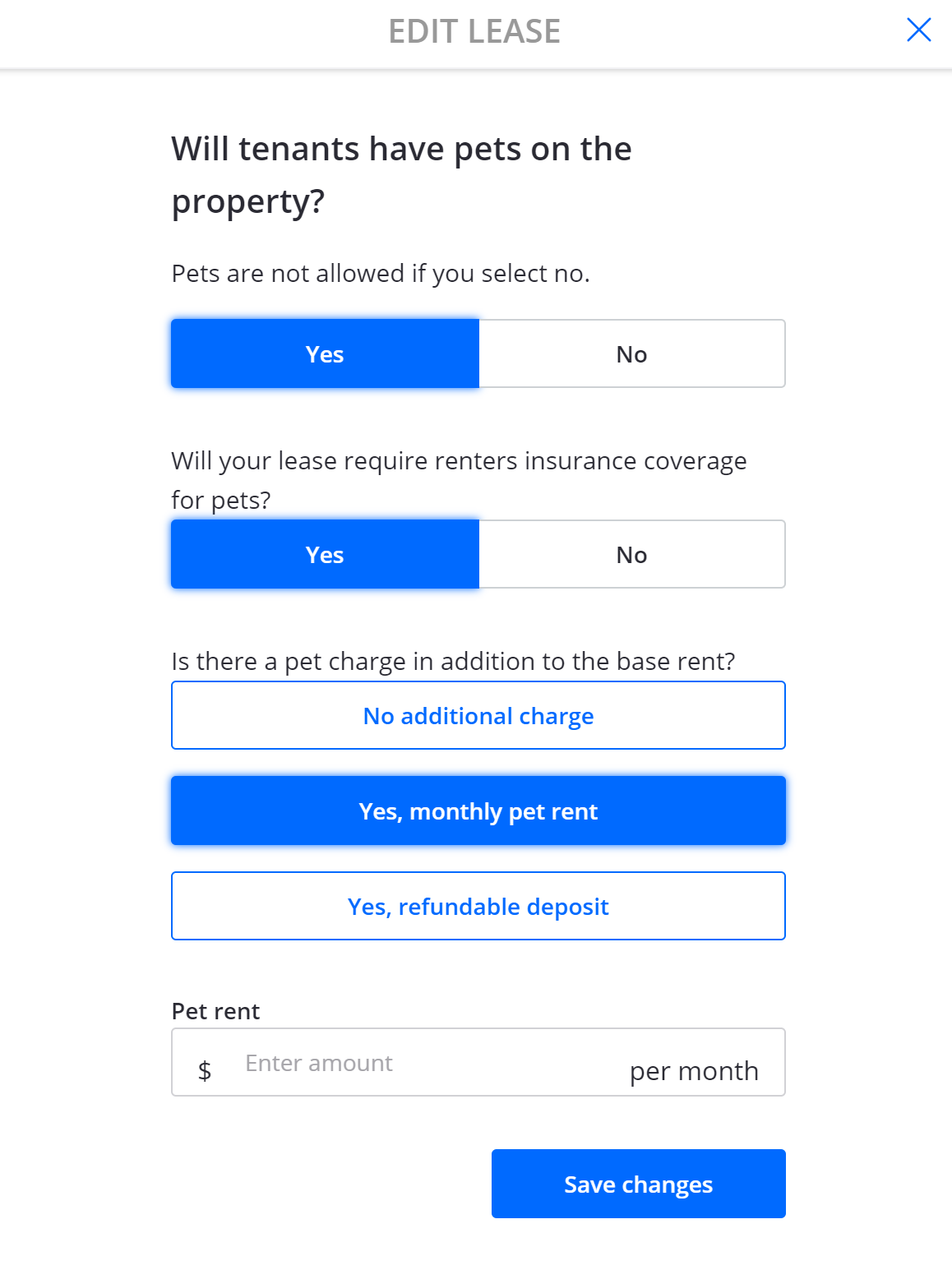
Parking
Are there specific places where tenants are and aren’t allowed to park? Make it clear if there are reserved spaces or if parking is open.
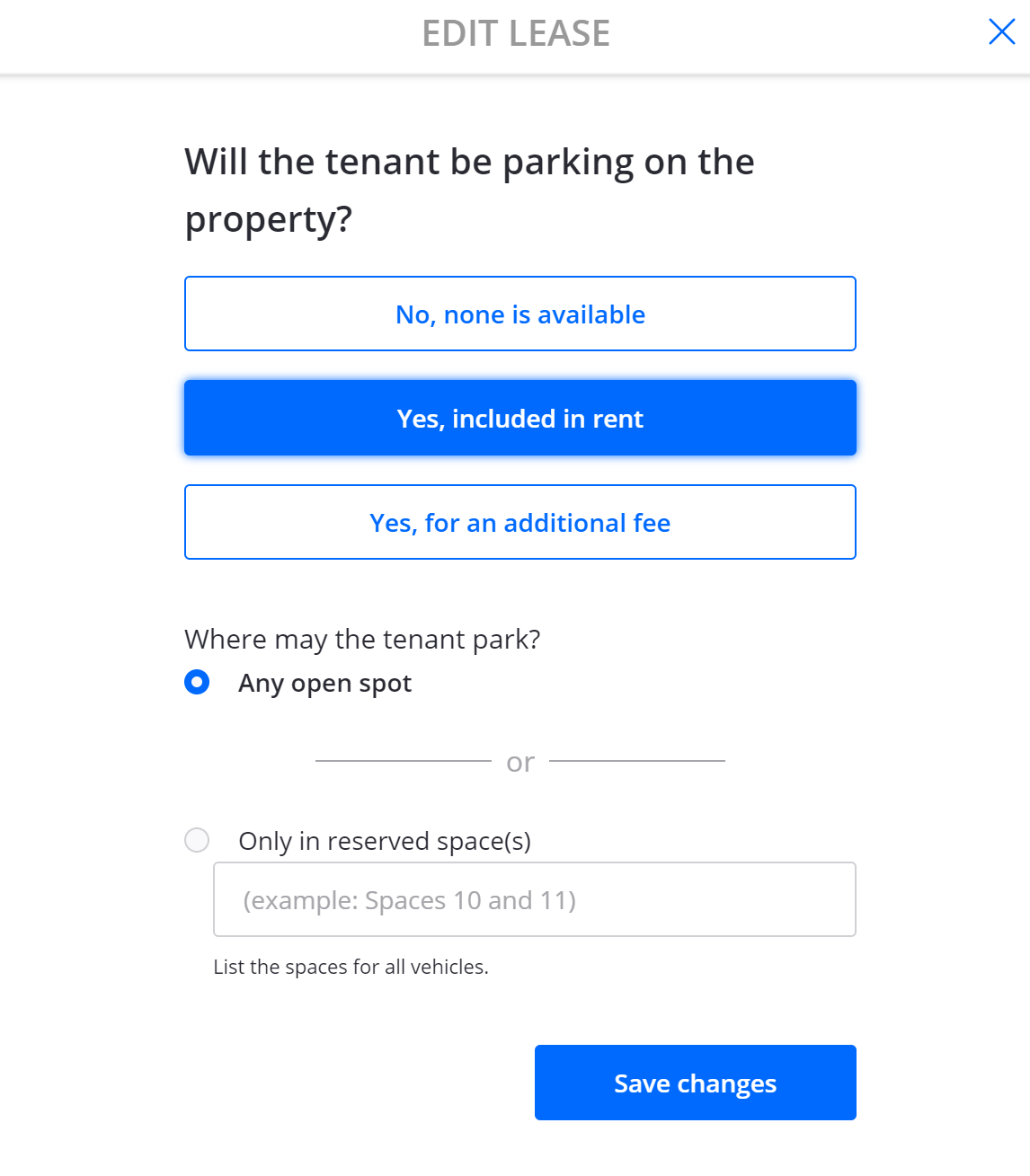
Storage
Do you offer extra storage on-site? If so, how much is available and what is the cost?
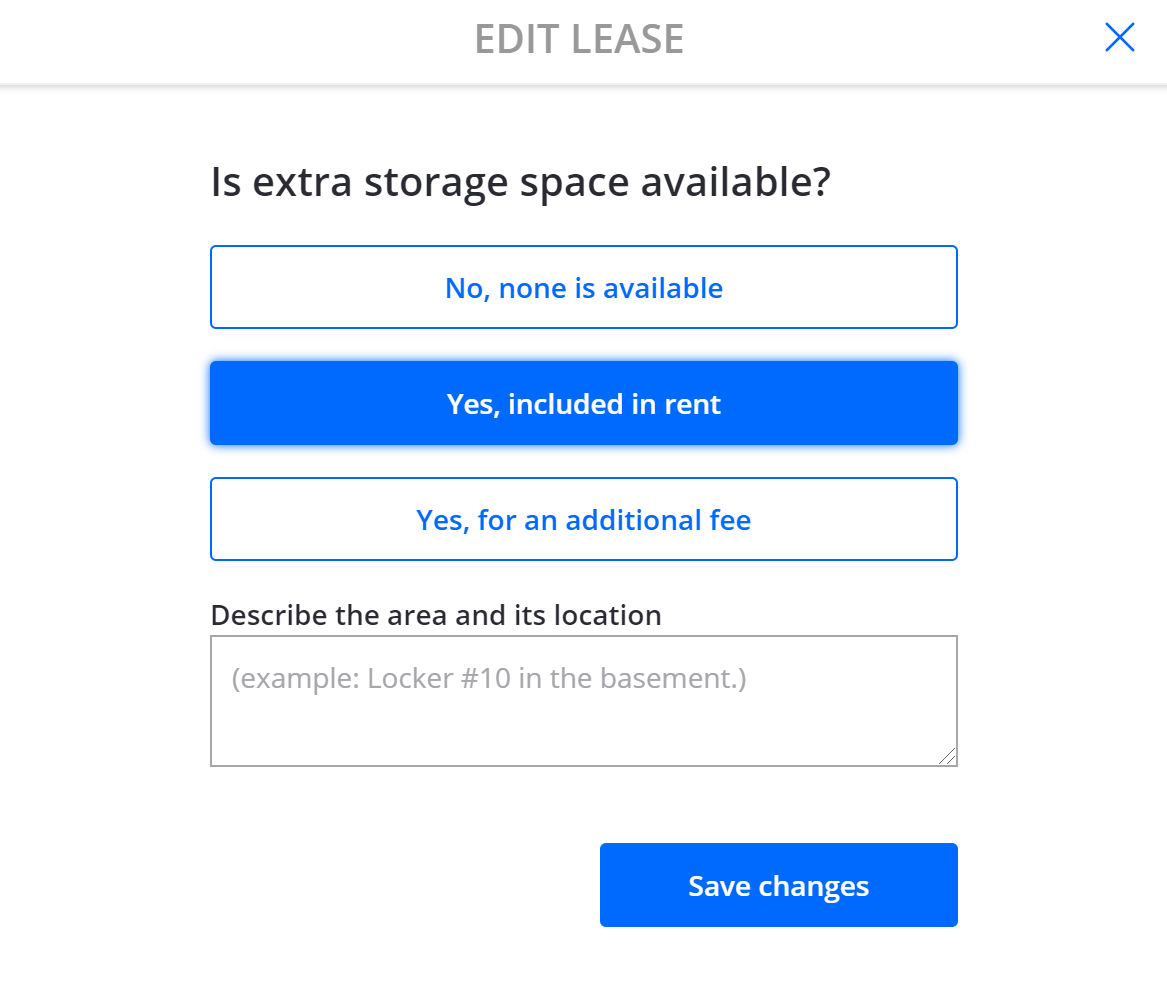
Before sending the rental agreement to your tenant, you’ll want to review it to ensure you didn’t miss anything. Zillow’s leasing tool allows you to easily make adjustments and save changes for later. Simply select Save and continue to save the current draft of your lease agreement and finish it another time. You can also skip over any section and come back to it later, if needed.
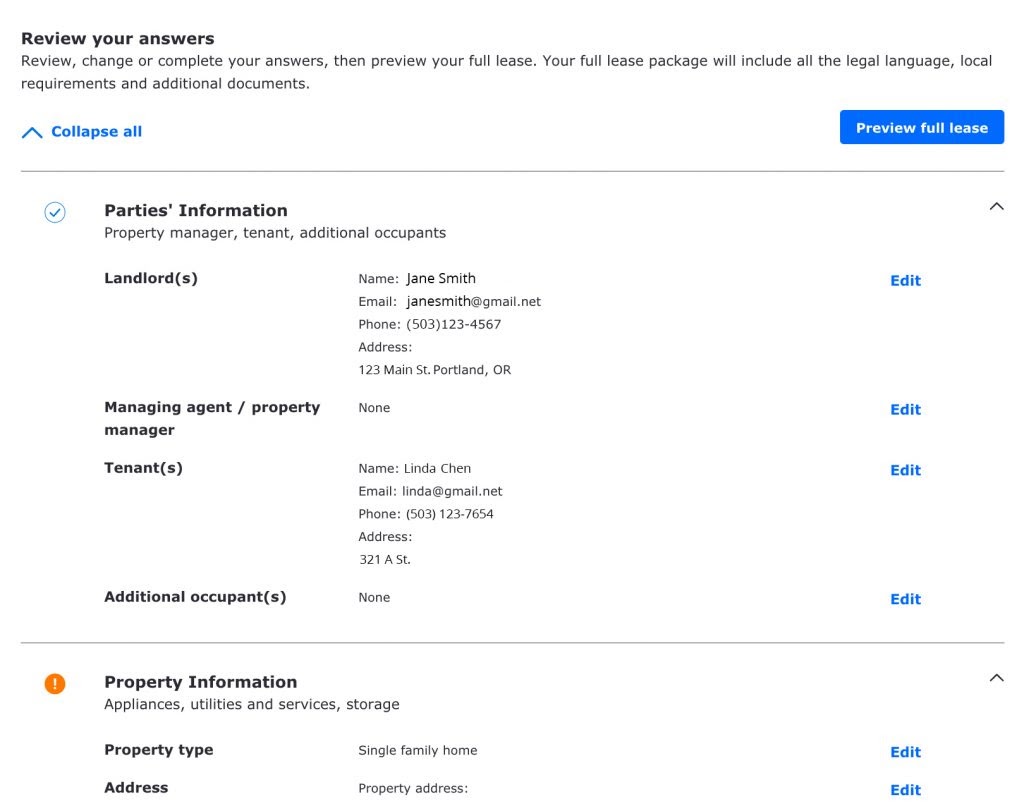
When you’re done creating a lease agreement, you’ll need to share it with your tenant so they can review and sign it. If you’re using our online lease agreement template, you can select Share to send it to your tenant for their signature. They’ll get an email notification and will be prompted to sign the lease or add comments and send it back to you for further review.
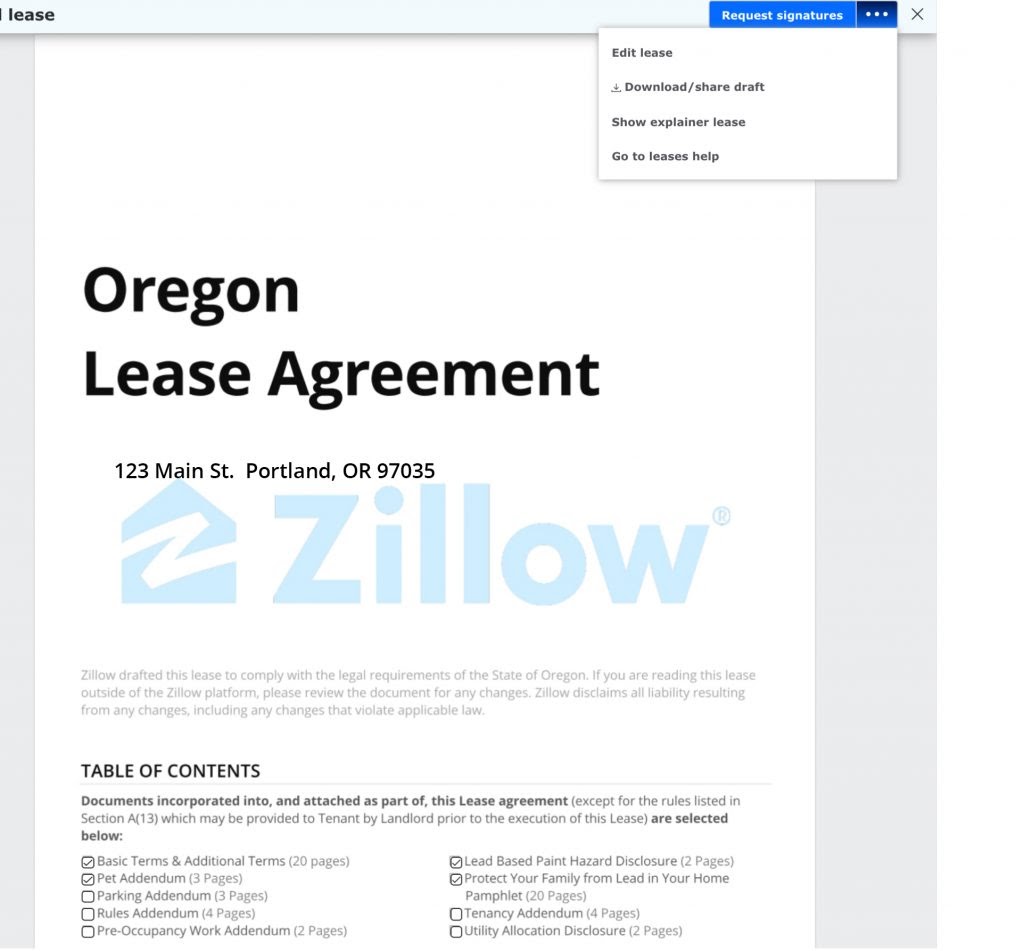
If you need to cancel or edit the lease agreement, select Cancel to revoke all signatures. You can then make an edit and send the new version to your tenant.
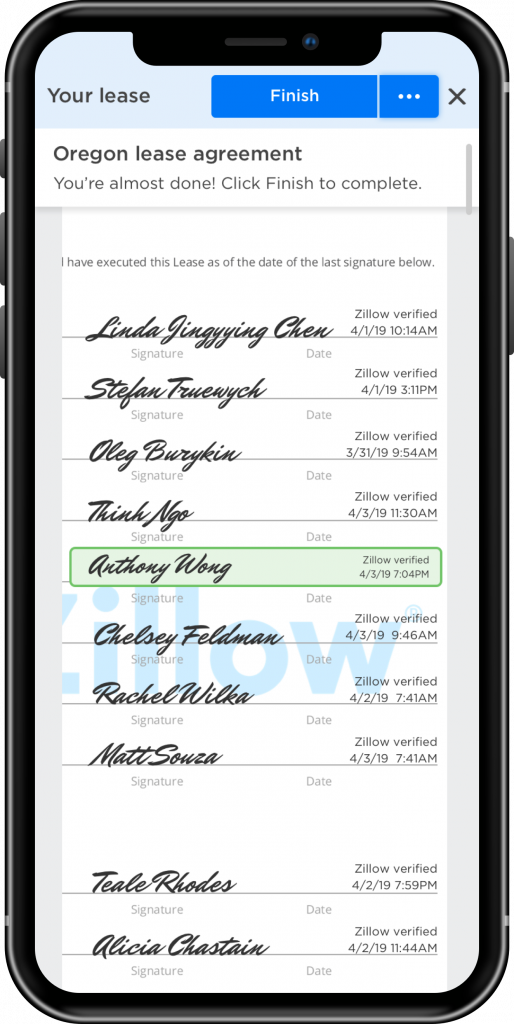
As the landlord, you can countersign the lease once all tenants have signed. Zillow Rental Manager will notify you by email when the lease is ready for you. Once your tenant has reviewed and signed their part, sign the lease agreement to make it official!
Access your signed leases any time by visiting your dashboard . You can also download signed leases for your records.